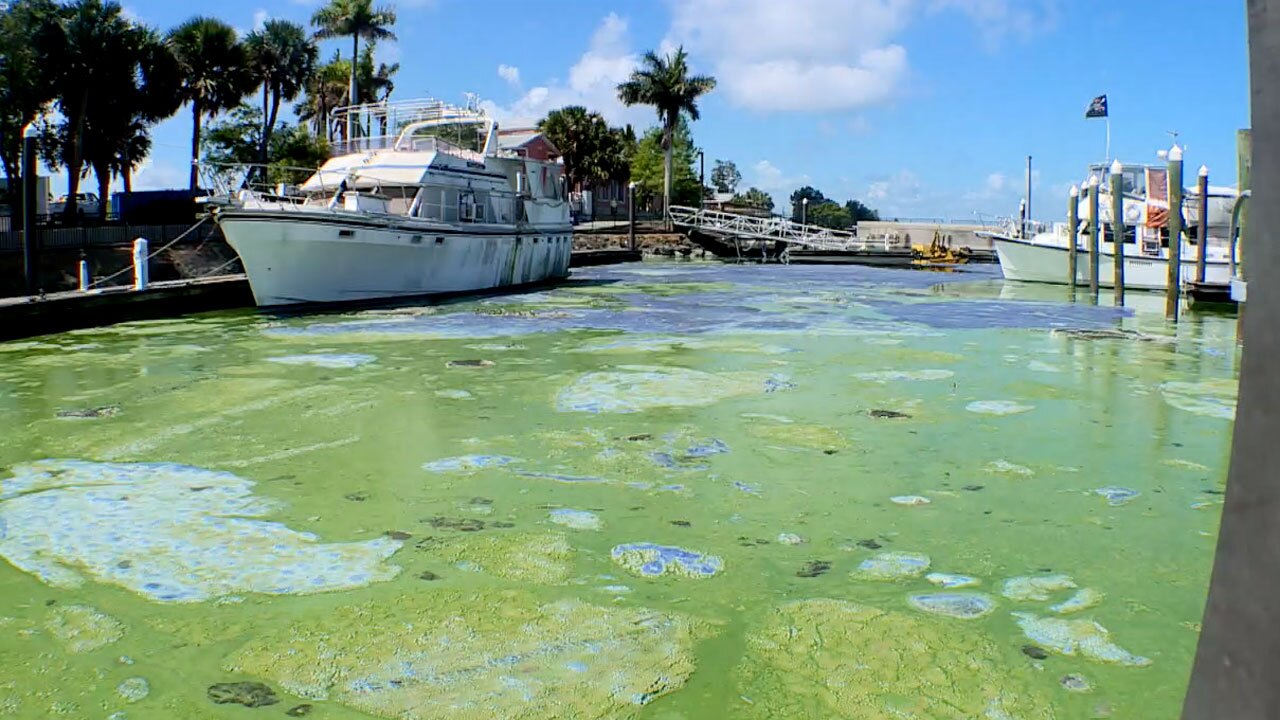STUART, Fla. — The Army Corps of Engineers announced there will be freshwater discharges from Lake Okeechobee starting Saturday.
According to a Wednesday news release, the discharges will be made from the east, west and south of the lake.
The lake is currently at an abnormally high level for the dry season following heavier-than-normal rainfall from El Niño.
The Army Corps said the releases are being made now to lower the lake level as much as possible before the wet season and to avoid high-volume releases during the summer.

Protecting Paradise
Army Corps considering discharges from Lake Okeechobee to St. Lucie Estuary
Water managers estimated the following discharges from the three locks:
- 1,800 cubic feet per second at the St. Lucie Lock and Dam into the St. Lucie River in Martin County
- 500 cubic feet per second at the Lake Worth Lagoon through the C-51 canal
- 4,000 cubic feet per second at Julian Keen Jr. Lock and Dam in Moore Haven into the Caloosahatchee River
The Army Corps said if Florida continues to receive additional rainfall, flow rates could increase higher. It's unclear how long the discharges will last.
In previous years, discharges into the St. Lucie River have fueled toxic blue-green algae and hurt area businesses that depend on clean water.

Protecting Paradise
$10M allocated to combat harmful algal blooms in Florida
U.S. Rep. Brian Mast, R-Fla., a longtime opponent of discharges from Lake Okeechobee into the St. Lucie Estuary, said he is demanding answers.
"My concern stems from the current management of the lake, which has kept Lake Okeechobee artificially high during dry periods to benefit the sugar industry at the expense of all other Floridians," Mast wrote in a letter to the Army Corps. "During the last dry season, for example, Lake Okeechobee never got below 13 feet, and we are now going to pay the price for this mismanagement in the form of dead seagrasses, killed-off oysters, and major threats to public health. Without the foresight to see medium to long-term impacts of dry season management, the USACE has put all the surrounding communities and the estuaries at severe risk."
Lake Okeechobee's water level is currently at 16.4 feet, which is about 2 feet higher than what officials would like the lake to be ahead of the rainy season.
Col. James Booth with the Army Corps of Engineers is scheduled to host a media call Friday to discuss the factors that they said make these releases necessary.




